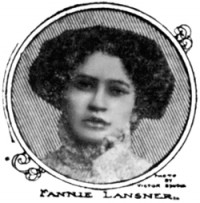
On this day one hundred and eleven years ago, my great-aunt Fannie Lansner jumped to her death to escape a fire that engulfed a New York City high-rise factory.
On March 25, 1911, Fannie delayed her exit so she could guide panicked Triangle Shirtwaist Co. co-workers to safety. Her heroism meant the 21-year-old sister of my paternal grandfather perished along with 145 others in a workplace blaze that proved to be a major turning point in American labor history.
What’s known as the Triangle Fire occurred in a time when employers ruled the job market as a wave of immigrants seeking the American dream — Fannie had come from Lithuania four years earlier — gave workers little leverage. For example, the fire happened on a Saturday in an era when the six-day workweek was common.
Studying the good, mundane or the really ugly history like this fire helps us understand how something like a pandemic can alter modern-day workplaces.
After two pandemic years of historic layoffs, rehirings and working remotely, many workers found themselves rethinking their careers. Quitting is hot. Unions’ share of the workforce grew. And pay soared.
The spark
Over a century ago, news of the deaths of so many young women killed in a sweatshop spread nationally like a modern viral video. The resulting anger boosted a simmering populist fervor.
Stricter fire-safety standards and tougher building codes were enacted. And that same buzz gave fledgling U.S. unions the momentum required to become a powerful economic force.
It was by no means the only time a major event would change the labor market’s dynamic.
Organized labor’s power clout began to decline in the 1970s as corruption scandals broke the public’s faith in union leadership. The economy’s shift away from heavily unionized factory jobs also cut memberships.
When then-President Ronald Reagan fired striking air-traffic controllers in 1981, the bold move launched an age in which bosses flexed their job-market muscle. Many U.S. employers took on the union movement, effectively shrinking workers’ power dramatically.
That is, until the coronavirus rearranged the economy.
Massive job cuts amid 2020 lockdowns were followed by swift hiring sprees that returned most workers to payrolls. One might have guessed that such a whipsawing of career paths would further humble workers.
Yet unlike other recent economic downturns that further weakened the labor movement, the pandemic has curiously strengthened workers’ resolve.
State of flux
Last year, 4.6 million Californians quit their jobs, according to federal employment stats.
That’s up 33% from 2020 when the pandemic-chilled economy fueled job-security fears. And 2021’s “voluntary departures” were up 7% above the old record high of 2019 — when early signs of workers’ unhappiness were brewing.
Next, consider union membership in California in the pandemic era. Membership is down, but the dip is less than job losses across the broad economy. So union’s share of workers has risen.
Related Articles
Oscar&Ma aims to help both nonprofits and people needing a fresh start
American weekly jobless claims at lowest level since 1969
What is causing Californians to leave California?
Why Disney should rethink its Florida expansion, keep jobs in California
Fewer Americans file for jobless claims last week
California had 2.47 million union members in 2021, tops in the nation, according to UnionStats. That was down 1% from pre-pandemic 2019, but the statewide job market lost 6% of its workers in 2019-2021. So union’s share of the California job market was 15.9% — sixth-highest — up 0.8 percentage points in two years.
The trend played out in both industry and government workplaces.
California’s private employers had 1.24 million union members in 2021, down 1% vs. 2019. That drop was smaller than the overall 6% loss of private jobs. Union share was 9.3%, up 0.5 points.
And the state’s public employers had 1.23 million union members in 2021, down 1.6% vs. an overall 5% loss of government jobs. Union share of government jobs was 54.5% — up 1.9 points.
All this empowerment has paid off in the paycheck. California’s average hourly wages rose 5.5% in the past two years after growing just 2.5% in the previous decade.
The pandemic has certainly sparked a rethinking of worker priorities — from compensation to remote work, to on-the-job safety. Many employers have begrudgingly accepted a “new normal” of whether to please their workers or simply meet business needs.
But the job market is a fluid marketplace. Some changes are slowly emerging. Others took a tragic catalyst like the 1911 Triangle Fire.
And 111 years later, I ask for Great Aunt Fannie — is today’s seemingly worker-friendly job market just a short-term readjustment to a post-pandemic life? Or is it the start of another long-running alteration in the worker-boss relationship?
Jonathan Lansner is the business columnist for the Southern California News Group. He can be reached at jlansner@scng.com
